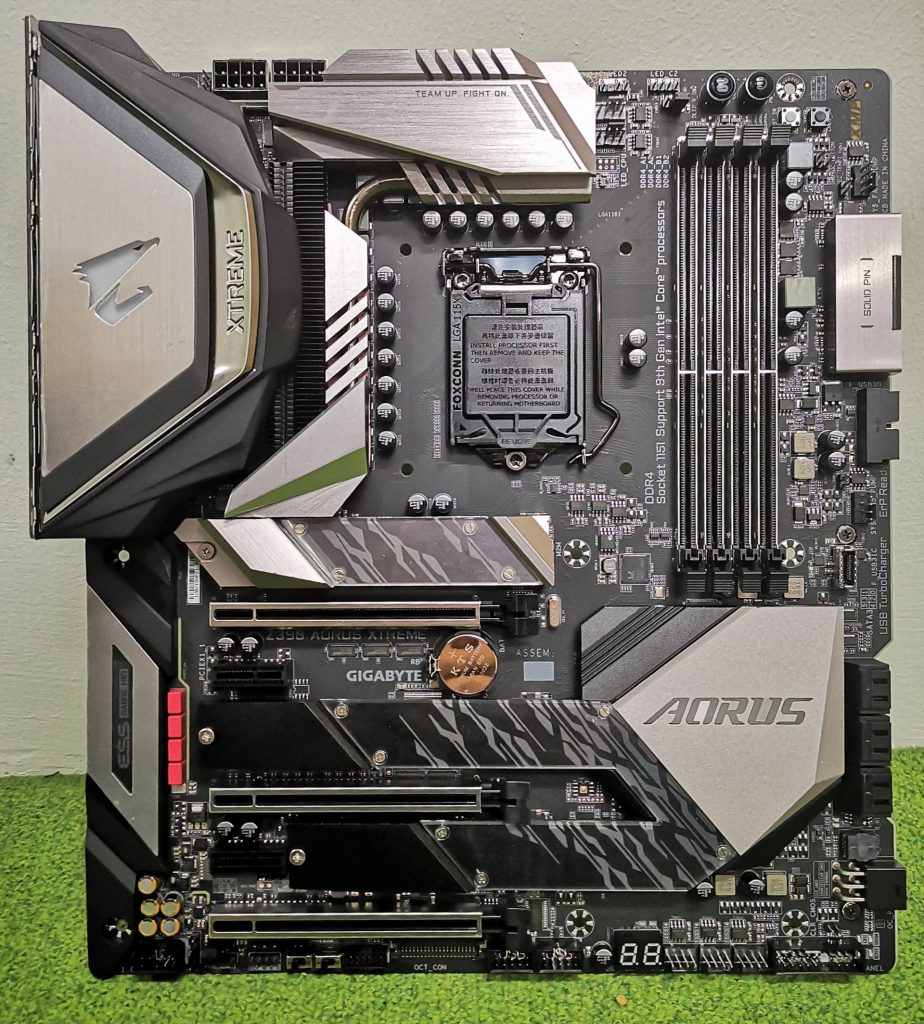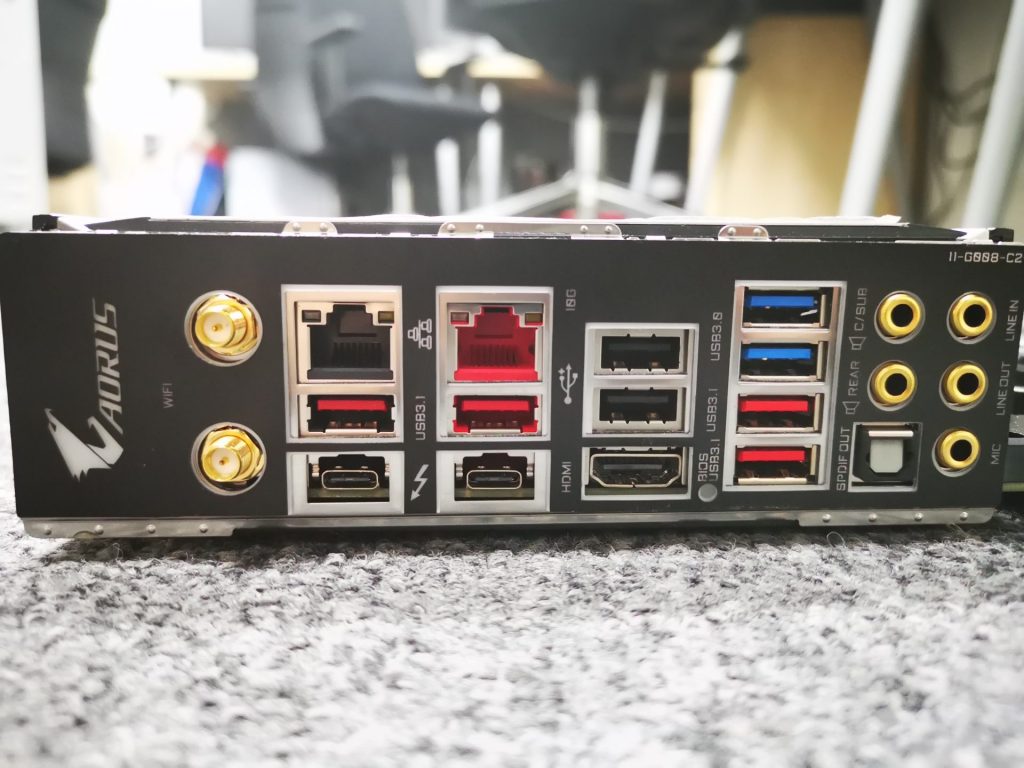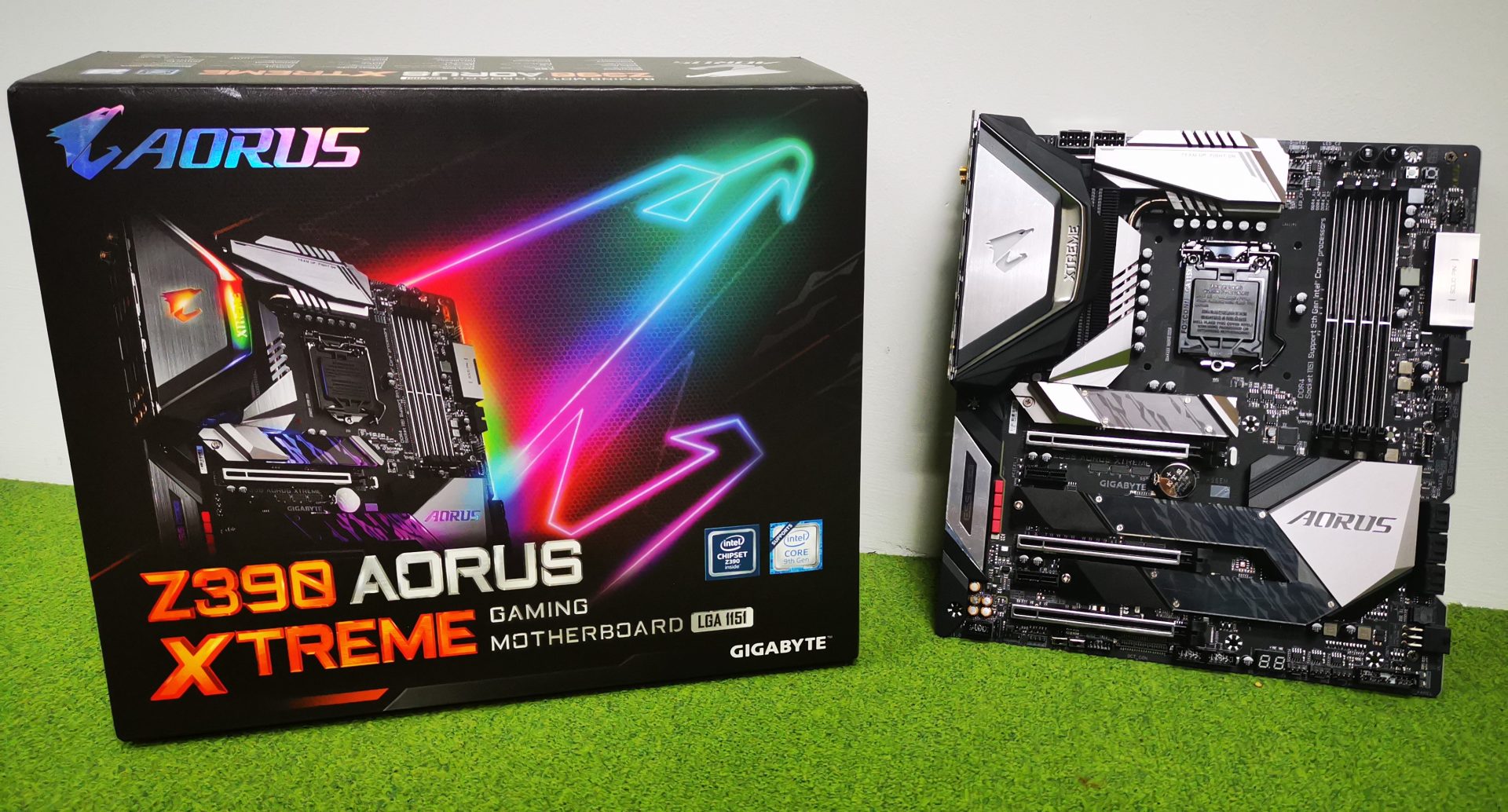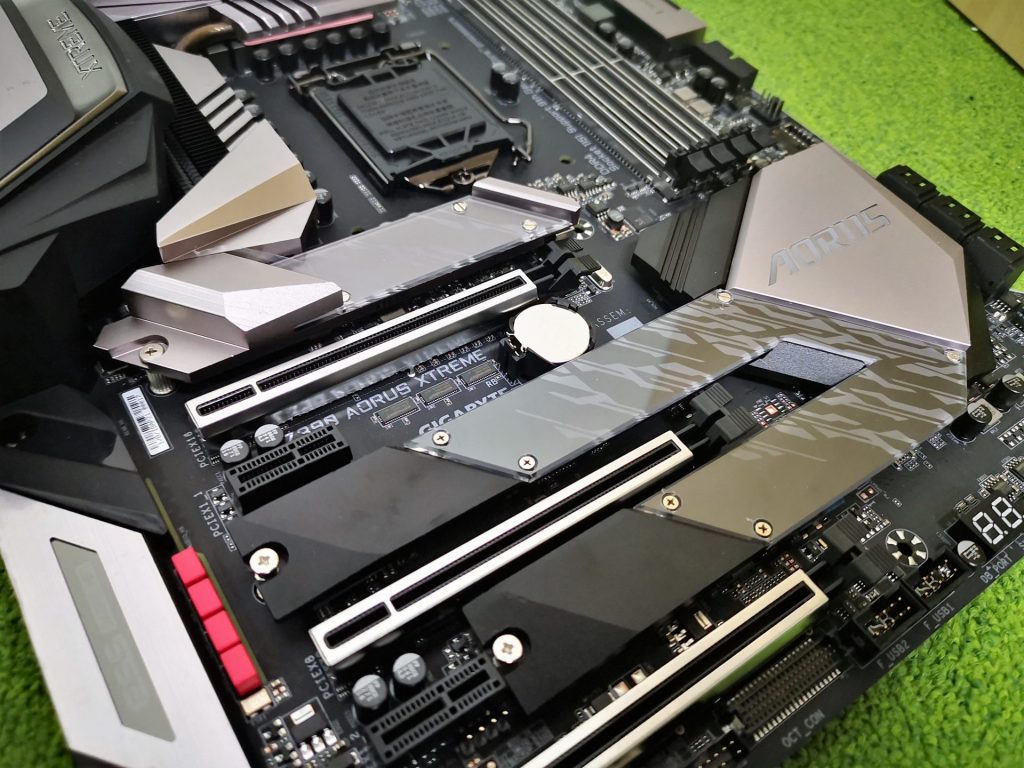The Gigabyte Z390 AORUS XTREME represents the top of the line motherboard from Gigabyte. Targeted at gamers, overclockers and enthusiasts, this flagship Z390 motherboard is equipped with the best in class components and features to bring about the best possible user experience. Being the flagship motherboard from Gigabyte Z390 series, we do expect no compromise when it comes to its design and features. Does the Z390 AORUS XTREME live up to its expectations? Let’s find out.
Introduction and Overview
Specifications

| Specifications | |
| CPU Support | 9th and 8th Generation Intel Core i9,i7,i5,i3 Pentium and Celeron Processors |
| Package | LGA1151 |
| Chipset | Intel Z390 Express Chipset |
| Memory | 4 x DDR4 DIMM sockets supporting up to 64GB of system memory
Support up to DDR4 4266(O.C) |
| Onboard Graphics | Integrated Graphics Processor (from CPU) |
| Audio | Realtek ALC1220-VB Codec
ESS ES9018K2M DAC and TI OPA 1622 operational amplifiers High Definition Audio 2/4/5.1/7.1 channel output Supports S/PDIF Out |
| LAN | 1 x Aquantia 10GbE LAN Chip
1 x Intel GbE LAN |
| Wireless | Intel CNVi 802.11a/b/g/n/ac supporting 2.4/5GHz Dual Band and Bluetooth 5.0 |
| Storage | 3 x M.2 slots (2 x supports both SATA and PCIe, 1 x support only PCIe)
6 x SATA 6Gbps |
| Form Factor | E-ATX Form Factor; 30.5 cm x 27.1cm |
PCIe and M.2 Expandability (Top to bottom)
- M.2 (2242/60/80/110) SATA and PCIe x4/x2 SSD
- PCIe 3.0 x16 Slot (Electrically x16)
- PCIe 2.0 x1
- M.2 (2260/80/110) SATA and PCIe x4/x2 SSD
- PCIe 3.0 x16 Slot (Electrically x8)
- PCIe 2.0 x1
- M.2 (2242/60/80) PCIe x4/x2 SSD – M2P
- PCIe 3.0 x16 Slot (Electrically x4, runs at x2 when PCIe SSD is installed on M2P conector)
The SSDs placed in the M.2 slots also supports RAID 0,1,5,10 as well.
The motherboard also supports NVIDIA SLI and AMD CrossFire technologies. When two (or more) graphics card are installed on the motherboard, the first PCIe x16 slot will automatically run in x8 mode. As the Z390 is still considered a chipset for the mainstream level consumers, it still lacks the larger number of PCIe lanes that are seen on the higher end HEDT X series chipsets. Therefore, we can see that many of the times, PCIe bandwidth compromises are made in order to support multiple components which are connected to the motherboard simultaneously.
Input/Output Interfaces

From Left to Right, Top to Bottom:
- Wi-Fi Antenna Ports
- Gigabit Ethernet RJ45 Port (Intel Gigabit LAN)
- USB 3.1 Port
- Thunderbolt 3 Port via USB Type-C
- 10 Gigabit Ethernet RJ45 Port (Aquantia)
- USB 3.1 Port
- Thunderbolt 3 Port via USB Type-C
- 2 x USB 2.0
- 1 x HDMI Video Out (From Intel CPU)
- 2 x USB 3.0 Port (USB 3.1 Gen 1)
- 2 x USB 3.1 Port (USB 3.1 Gen 2)
- 7.1 Surround Output audio jacks and SPDIF








Hello,
Is the Thunderbolt controller Titan Ridge or Alpine Ridge?
You can find out by opening Thunderbolt Software and posting screenshot of the “About” dialogue.
If you cannot post screenshot, please tell the NVM version and Thunderbolt controller – is it 1577, 15D2 or 15EB?
Thank you!